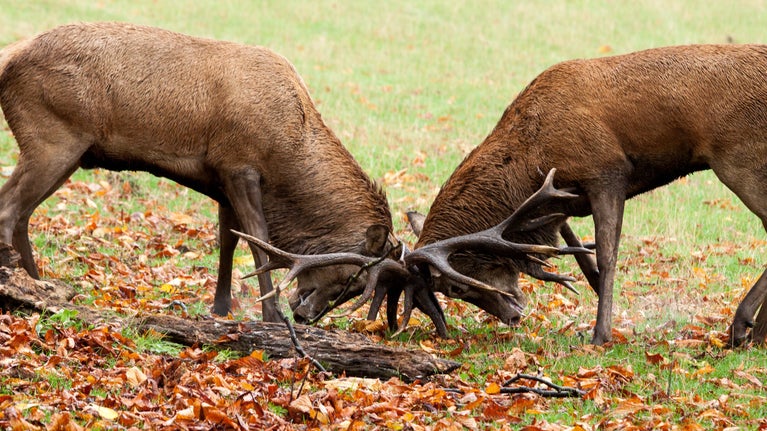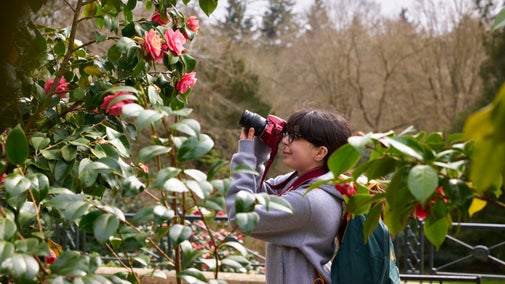
Explore the natural world
From learning how to identify trees to discovering the underwater world of rockpools, pick up some top tips to help you get closer to nature.

If you're inspired to capture the beauty of nature, read our tips for taking brilliant photos of nature and wildlife, from framing your subject to perfectly capturing movement. Then why not practise your skills on a photography walk around one of the places we look after, taking photos of the wildlife and nature you see along the way?
Rather than photographing things because of how they look, try to find out an interesting fact about your subject. How does that animal put up with the cold? Who planted this tree? Try to describe what you’ve found out in the image you take. And if you need answers, remember you can always ask a ranger, staff member or volunteer.
Imagine your frame is divided into thirds, horizontally and vertically. Try structuring your composition so the main points of interest sit on these imaginary lines. This simple rule will make your compositions feel balanced. It’s also a good way to remind yourself not to overcrowd your photo.
By zooming in and out and moving left and right, remove anything from the frame that doesn't complement your subject or describe what you found out about it. While it can be tempting to capture everything your eyes see, with photographs less is definitely more. So if you find yourself trying to squeeze too much into your image, just take more photos, narrowing your framing for each one.

Photography is all about light. While the midday sun can sometimes be too intense to capture landscapes at their best (especially in summer), it gives you lots of options for interesting close-ups. Focus on the details of an object such as the texture of pebbles on a beach or the petals of a flower in bloom. Then see what your subject looks like in different lights – for example, backlit to create an artistic silhouette or directly lit to pick out every last detail.
When you’re choosing what to shoot, think about making colour the hero of your photograph. You can create lots of different moods by combining colours. For example, poppies look very different when they're framed against green foliage compared to when they have the backdrop of a grey, cloudy sky. Have fun and see what colour combinations give you the most interesting photo.
There are loads of interesting ways to capture moving subjects, whether you're trying to snap waves crashing onto the beach or your family rolling down a hill. In bright light, try increasing the shutter speed to capture sharp, still photos. Alternatively, when the light’s a bit dimmer, you may need a slower shutter speed. This will allow any moving objects to blur, emphasising their energy and speed.
As the sun dips below the horizon, it treats photographers to a final gift of the day. The last few rays bounce off the clouds and the world around us glows, casting a rich soft light that’s perfect for capturing truly inspirational photos. But be prepared – this magic moment doesn’t last long.

From learning how to identify trees to discovering the underwater world of rockpools, pick up some top tips to help you get closer to nature.
The CEWE photo competition is now closed – thank you to everyone who's entered.

Whether you wander along rugged coastal headlands or stroll around your favourite park, discover how walking in nature can help improve your general wellbeing.

Learn how to spot red squirrels, the best times to see them and how to tell them apart from grey squirrels.

Take a look at our guidelines for responsible seal spotting and top tips for seal watching.

Although otter numbers are on the rise, the shy and elusive marine mammals are still notoriously difficult to find. To boost your chances, here are our top tips on how to spot them in the wild.

Discover how to identify burrows, food, footprints and latrines, and how to tell the difference between water voles and brown rats, even when they're swimming.

Discover how to spot butterflies without scaring them away, and find out which types of plants will attract them to your garden or green space.

Find out how the changing seasons affect the birds you’ll see out and about, with spotting tips and photo galleries to guide you.
